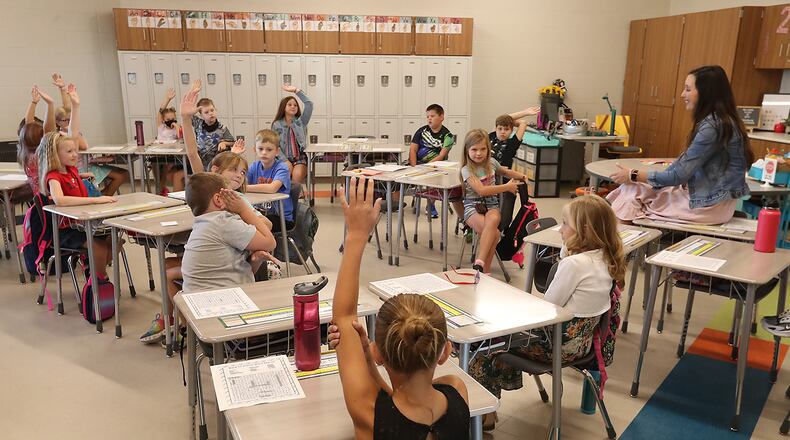Leaders of Clark-Shawnee schools met on Thursday at the Springfield Twp. trustee office during a town hall meeting to answer questions about the levy, with a handful of local taxpayers in attendance.
The two existing levies for the district are an emergency levy first approved in 2012 by voters that generates about $2.5 million annually and an emergency levy first approved in 2014 by voters that generates about $2.2 million annually, said Clark-Shawnee superintendent Brian Kuhn.
Both levies are used for operating costs for the district, including materials, supplies, salaries, benefits, programs, classes and more. The need for a levy is not related to renovations and construction of the district’s school buildings, as the levies fund operations at the schools.
Roughly 79% of those operating expenses cover personnel-related costs.
“We’re a service organization. We’re not burning materials and putting out a product; we’re instructing kids,” Kuhn said. “It takes humans, people to instruct.”
The 12.1 levy will replace the two levies if passed and also generate $4.7 million annually: thus, the 2013 and 2014 levies will no longer be collected if the 12.1 mill levy passes on Aug. 2. Collection for the Aug. 2 levy would begin in 2023, Kuhn said.
The money generated accounts for 23% of the district’s general operating expenses, according to the school district. The levy would cost an owner of a $100,000 property $396 a year, the same as what the 2012 and 2014 levies cost an owner of a property of the same value.
Supt. Kuhn said this amounts to roughly $1.08 per day.
Clark-Shawnee schools have been deficit spending for a few years, Kuhn said: more money comes out than it comes in. Costs continue to rise, but revenue to the school district doesn’t increase.
The schools have already merged or eliminated an administrative position, nine teaching positions, and a few food service, clinical aide and custodial positions to cut expenses. The schools have been deficit spending for the past few years. Other adjustments to employment and other costs are being considered for next school year: for example, an increase to school fees and pay-to-participate fee.
Fee schedules will be approved by the Clark-Shawnee Board of Education before fall.
“Clark-Shawnee operates by the skin of our teeth,” said Clark-Shawnee board member Susan Page. “A lot of our teachers and administrators do extra, give extra… because they love our community and our schools and our kids. Some places have a pot of gold, and we’re just barely making it.”
The 12.1 levy does not increase taxes for current Springfield Twp. residents, as they are already paying on the existing levies. However, it will capture additional revenue from new residential and commercial developments.
Clark-Shawnee schools include Shawnee High School, Shawnee Middle School and Shawnee Elementary.
According to results from the Clark County Board of Election, roughly 52.88%, or 1,311, of voters were against the levy and 47.12%, or 1,168, of voters voted for it.Last November, voters rejected the operating substitute levy with 51.93%, or 1,104, voting against and 48.07%, or 1,022 for it.
